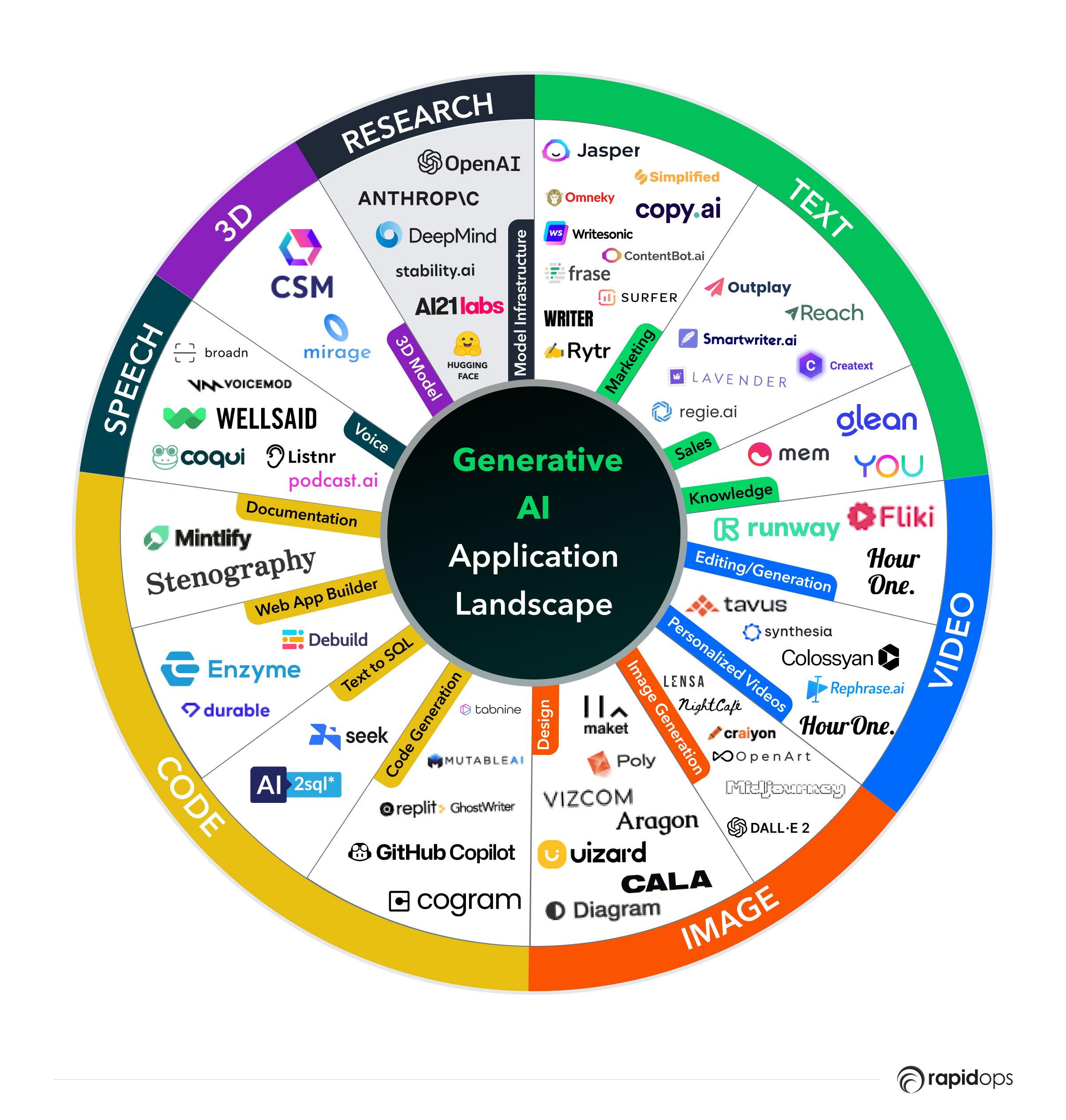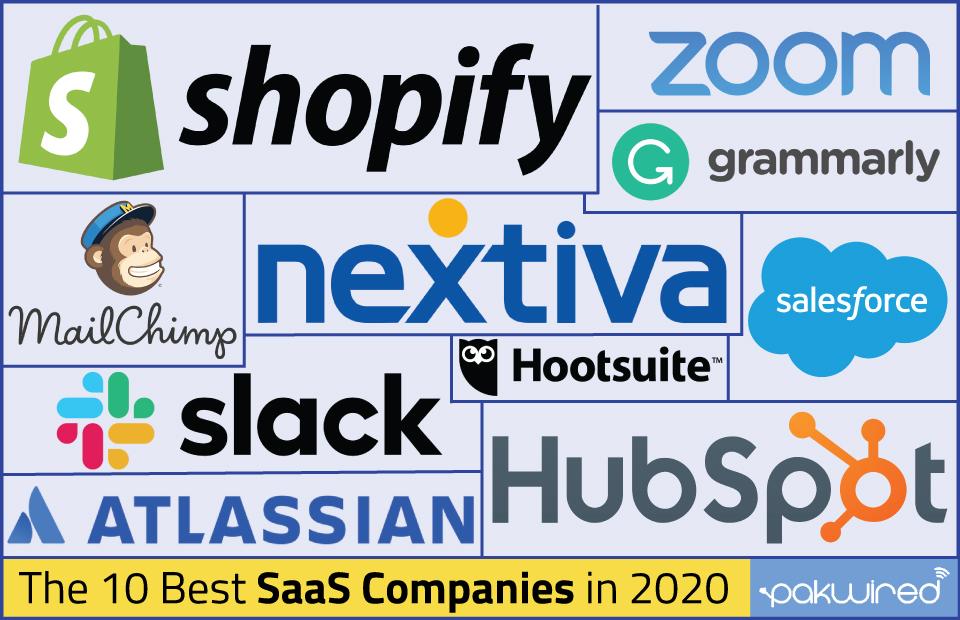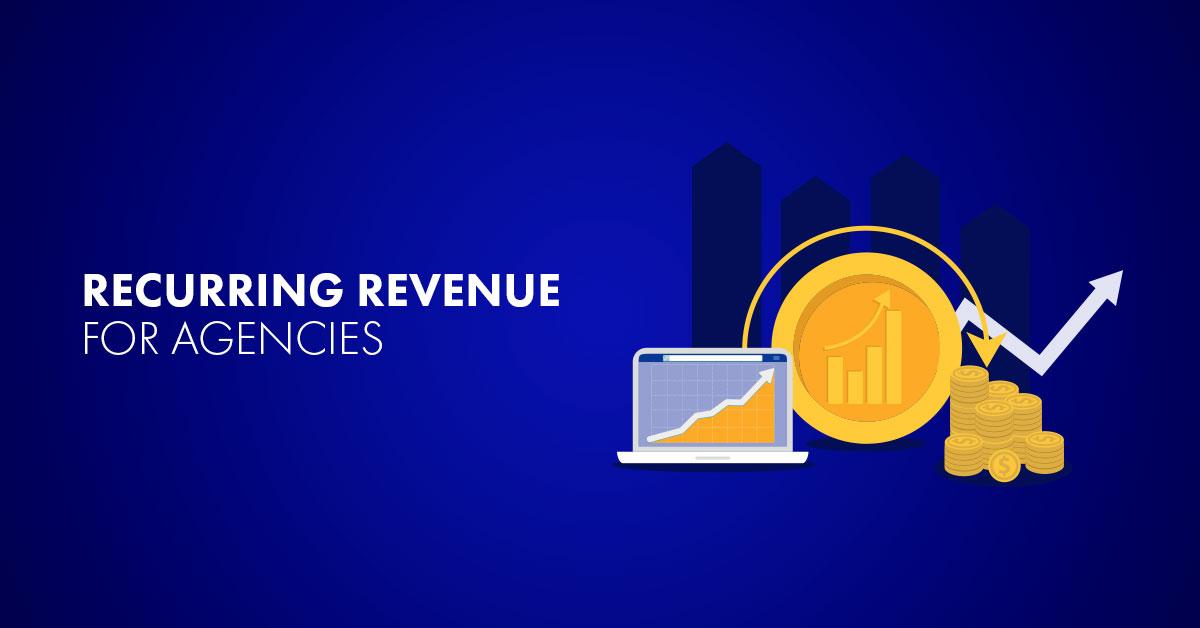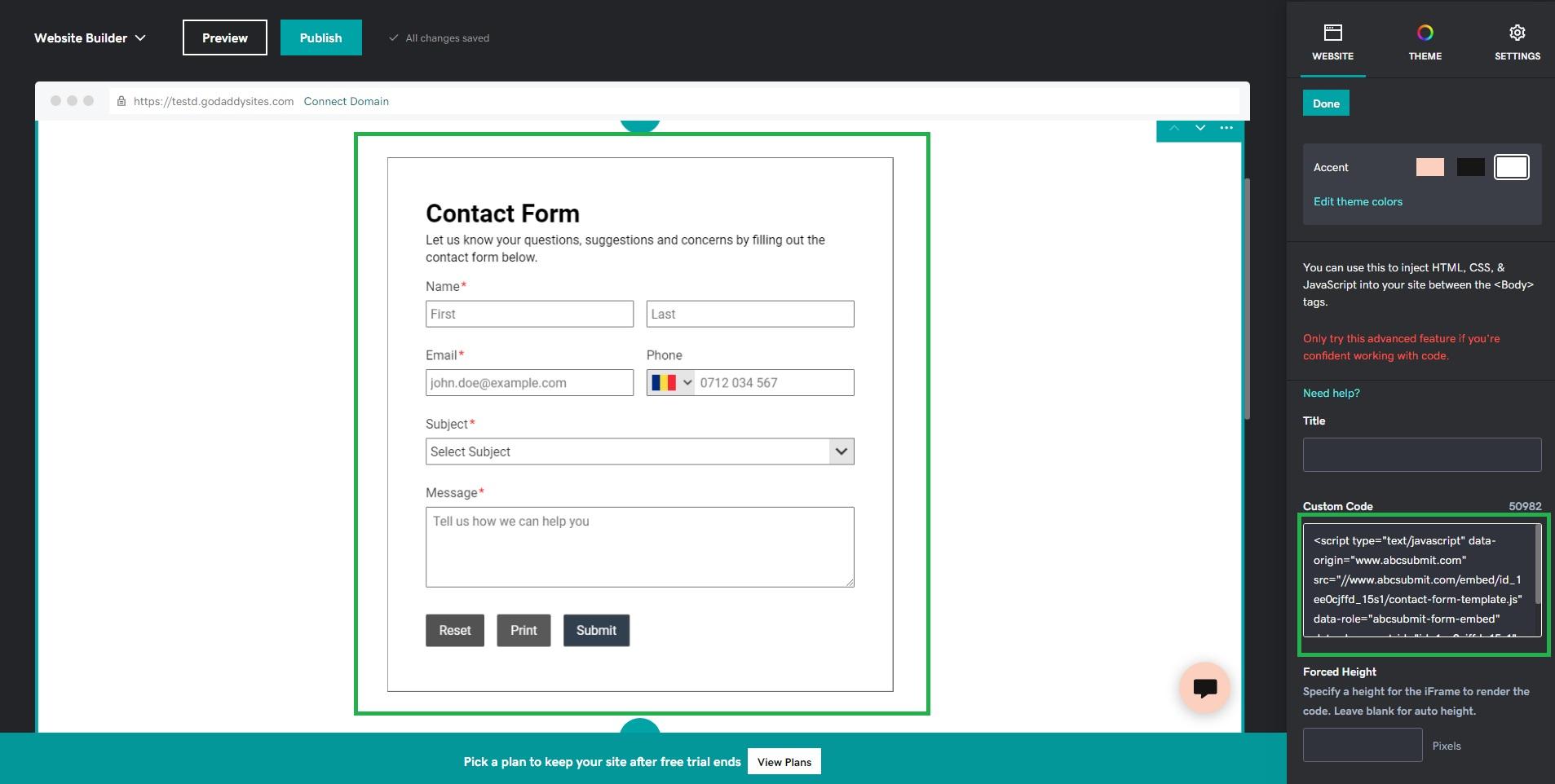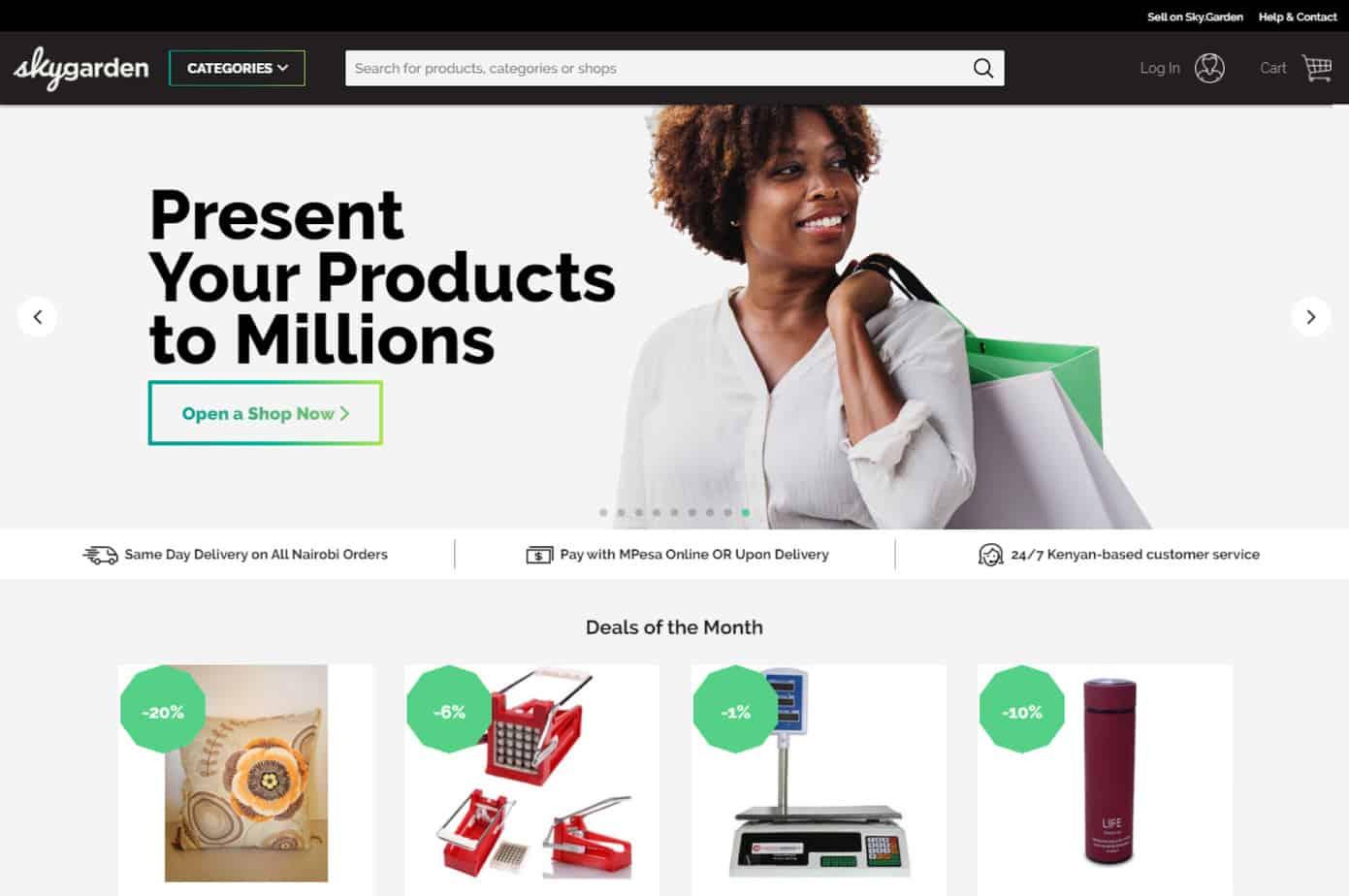
In today’s fast-paced digital landscape, having a stellar online presence is no longer optional—it’s essential, especially if you want to thrive in the eCommerce world. If you’re a business owner in Utah looking to launch or revamp your online store, you’re in the right place! A well-crafted eCommerce website can be the difference between a casual visitor and a loyal customer. But with so many design options and providers out there, where do you even start? Don’t worry! We’re here to guide you through the exciting process of creating a high-performing online store that attracts customers and drives sales. In this article, we’ll explore the key elements of effective eCommerce web design and introduce you to the five best providers in Utah who can turn your vision into reality. So, grab your favorite beverage, sit back, and let’s dive into the world of eCommerce design that will set your business apart!
Ecommerce Web Design Trends Shaping Utah’s Online Market
In the rapidly evolving landscape of ecommerce, Utah’s online market is experiencing a dynamic shift in web design trends. Merchants and designers alike are embracing innovative approaches that not only enhance user experience but also drive conversions. Here are some key trends that are shaping the future of ecommerce web design in the Beehive State.
Mobile-First Design has become essential as more consumers shop on their smartphones. Websites that prioritize mobile optimization ensure that users enjoy a seamless shopping experience, regardless of their device. This approach requires a flexible layout, faster loading times, and easily navigable menus, allowing customers to browse products effortlessly.
Minimalism continues to dominate. Clean lines, ample whitespace, and limited color palettes create a visually appealing environment that helps direct users’ attention to products. This design philosophy not only enhances aesthetic appeal but also reduces cognitive overload, making it easier for customers to make purchasing decisions.
Another notable trend is the use of bold typography. Unique fonts and striking text sizes effectively convey brand personality and draw attention to key messages. When combined with compelling visuals, bold typography can significantly influence customer engagement and retention.
Interactive Elements such as quizzes, polls, and product customization tools are now commonplace in ecommerce websites. These features not only capture user interest but also encourage deeper interaction with the brand. For instance, a clothing store might offer a virtual try-on feature, allowing customers to see how a garment would look on them before making a purchase.
The rise of personalization is transforming how customers interact with online stores. By utilizing data-driven insights, ecommerce sites can tailor product recommendations, emails, and content specifically to individual user preferences. This targeted approach fosters a sense of connection and loyalty between the consumer and the brand.
Sustainability is also gaining traction in ecommerce design. With increasing awareness of environmental issues, many brands are highlighting their sustainable practices through eco-friendly design elements. This could include using earthy color palettes or showcasing sustainable product lines, resonating well with environmentally conscious consumers.
Lastly, integrated social media features are becoming integral to ecommerce design. Allowing customers to share products directly from the site to their social media platforms not only enhances visibility but also builds a community around the brand. User-generated content acts as a powerful testimonial, encouraging new customers to trust and engage with the brand.
| Trend | Description | Benefit |
|---|---|---|
| Mobile-First Design | Prioritizes mobile optimization for seamless experience. | Increases accessibility and user satisfaction. |
| Minimalism | Focus on clean lines and whitespace. | Enhances product visibility and decision-making. |
| Bold Typography | Utilizes unique fonts for brand identity. | Improves engagement and brand recall. |
| Interactive Elements | Incorporates quizzes and customization tools. | Boosts user interaction and enjoyment. |
| Personalization | Tailors experiences based on user data. | Increases customer loyalty and repeat purchases. |
| Sustainability | Highlights eco-friendly practices. | Appeals to environmentally conscious shoppers. |
| Social Media Integration | Facilitates sharing products on social platforms. | Enhances brand visibility and community building. |

Understanding Your Target Audience for a Successful Ecommerce Site
To create a high-performing ecommerce site, understanding your target audience is not just a recommendation; it’s essential. Knowing who your customers are helps shape every aspect of your site, from design to product offerings, making sure you cater to their specific needs and preferences.
Demographics play a crucial role in defining your audience. Consider factors such as age, gender, income level, education, and location. Gathering this data through surveys or analytics can help you tailor your content and design. For instance, if your primary demographic is young adults, a modern, vibrant design with interactive elements will resonate more than a minimalist, traditional layout.
Psychographics delve deeper into the attitudes, interests, and lifestyles of your audience. Understanding what drives your customers can help you create compelling marketing messages. Are they environmentally conscious? Do they value luxury over affordability? This type of information will guide your branding and content strategy.
Behavioral data is another key component. Analyzing how customers interact with your site gives insights into their shopping patterns. Consider factors like:
- Which products are frequently viewed or purchased?
- What time of day do users tend to shop?
- How do customers find your site (social media, search engines, etc.)?
Utilizing tools like Google Analytics can provide you with this information, allowing you to refine your product offerings and enhance your user experience. For example, if users tend to abandon their carts at a certain point, it may indicate issues with your checkout process.
Creating customer personas can also greatly enhance your understanding of your target audience. These fictional representations of your ideal customers include their demographics, behaviors, and motivations. By developing detailed personas, you can personalize the shopping experience and craft targeted marketing strategies.
| Customer Persona | Demographics | Motivations |
|---|---|---|
| Eco-Conscious Emma | 25-35 years, Female, Urban | Sustainability, Quality |
| Budget-Friendly Brian | 18-30 years, Male, College Student | Affordability, Discounts |
| Luxury Lisa | 30-50 years, Female, High Income | Exclusivity, Status |
keep in mind that your target audience can evolve over time. Regularly revisiting your audience analysis allows you to stay ahead of trends and shifts in consumer behavior. Conducting polls, analyzing customer feedback, and keeping an eye on market trends ensures your site remains relevant and appealing.
By taking the time to understand your target audience, you’re not just building a website—you’re creating an online shopping experience that resonates, engages, and ultimately leads to conversions. This knowledge, when applied effectively, can significantly enhance the success of your ecommerce venture.
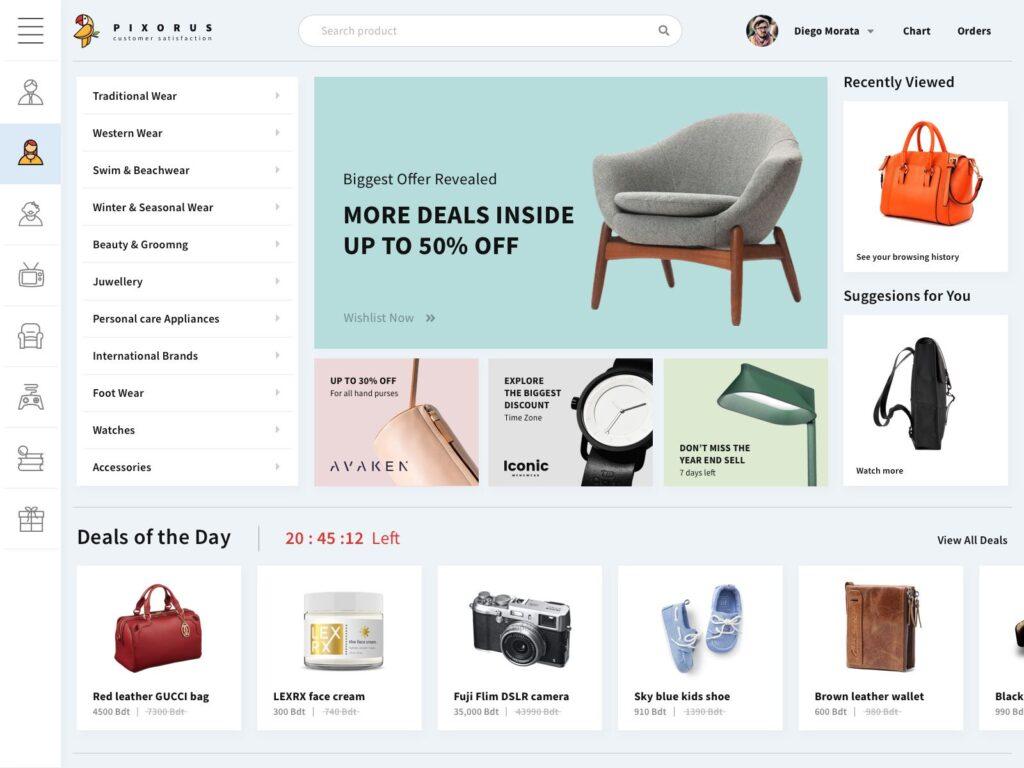
Key Elements of High-Performing Ecommerce Web Design
Creating a successful online store goes beyond just having a visually appealing website. It involves a careful integration of several key elements that work together to enhance user experience and drive conversions. Here are some crucial components to consider when designing your ecommerce website:
- User-Friendly Navigation: Ensure that visitors can easily find what they’re looking for. A well-structured menu, categorized products, and a robust search function can significantly reduce bounce rates.
- Responsive Design: With an increasing number of shoppers using mobile devices, your site must look great and function well on all screen sizes. A responsive design adapts seamlessly to different devices, encouraging users to stay longer on your site.
- High-Quality Visuals: Images and videos play a vital role in showcasing products. Investing in high-resolution images that can zoom in and 360-degree views can provide customers with a closer look, mimicking the in-store experience.
- Fast Loading Times: Speed is essential in ecommerce. A delay of just a few seconds can lead to abandoned carts. Optimize images, leverage browser caching, and consider a content delivery network (CDN) to enhance loading times.
- Clear Call-to-Actions (CTAs): Your CTAs should be prominent and persuasive. Use action-driven language like “Shop Now” or “Get Started” to guide users through the purchasing process and encourage clicks.
In addition to these elements, providing customer reviews and testimonials can greatly enhance credibility. Potential buyers often look for social proof before making a purchase. By integrating a review section or displaying testimonials prominently, you can build trust and increase conversion rates.
Moreover, an effective checkout process is vital for reducing cart abandonment. Simplify the checkout steps, offer guest checkout options, and provide multiple payment options to cater to different customer preferences. Keeping the process intuitive and straightforward can help seal the deal.
| Design Element | Importance |
|---|---|
| User-Friendly Navigation | Reduces bounce rates and enhances user experience |
| Responsive Design | Increases accessibility on various devices |
| High-Quality Visuals | Mimics in-store experience and builds confidence |
| Fast Loading Times | Prevents cart abandonment and improves SEO |
| Clear CTAs | Guides users and encourages conversions |
Lastly, integrating analytics tools allows you to track user behavior, identify bottlenecks in your sales funnel, and make data-driven decisions to improve your site continuously. Understanding how visitors interact with your website can provide invaluable insights, helping you refine your design and marketing strategies over time.
The Importance of Mobile Responsiveness in Your Online Store
In today’s digital landscape, the majority of consumers are browsing online stores using their mobile devices. This shift makes it absolutely essential for ecommerce businesses to prioritize mobile responsiveness in their design. A mobile-responsive site ensures that your customers have a seamless shopping experience, regardless of the device they use to access your store. If your site isn’t optimized for mobile, you risk losing potential sales and damaging your brand’s reputation.
Consider the following benefits of having a mobile-responsive online store:
- Improved User Experience: A site that adapts to different screen sizes makes navigation easier for your customers. From product browsing to checkout, every step should be intuitive and frustration-free.
- Higher Conversion Rates: Mobile users are likely to convert if they find what they’re looking for quickly and easily. A responsive design leads to a smoother user journey, encouraging purchases and reducing cart abandonment.
- SEO Benefits: Search engines like Google prioritize mobile-friendly websites in their rankings. A responsive design not only enhances user experience but also improves your store’s visibility in search results.
- Enhanced Brand Image: A well-designed, mobile-responsive site reflects professionalism and care, which can greatly enhance your brand image and build customer trust.
To make a compelling case for mobile responsiveness, let’s look at some statistics:
| Statistic | Value |
|---|---|
| Mobile Commerce Growth | Up 54% in 2021 |
| Cart Abandonment Rate | Over 80% on mobile devices |
| Mobile Users | Over 50% of all web traffic |
These figures highlight the undeniable trend toward mobile shopping, making it imperative for online stores to adapt. Ignoring mobile responsiveness means missing out on a significant portion of potential customers who prefer to shop on-the-go.
Furthermore, consider the competitive landscape. Many ecommerce platforms and competitors are ahead of the curve, leveraging mobile responsiveness to enhance their customer experience. By investing in a mobile-optimized design, you’re not just keeping pace; you’re positioning your brand for sustained growth and success in an ever-evolving market.
Optimizing User Experience to Boost Conversions
Creating an online store that converts visitors into customers is more than just a flashy design; it’s about crafting an experience that resonates with your audience. To achieve this, you must prioritize user experience (UX) at every stage of the design process. Here are some essential strategies to enhance UX and, in turn, boost conversions.
- Intuitive Navigation: Make it easy for users to find what they’re looking for. A well-structured menu and clear categories can significantly reduce bounce rates.
- Mobile Optimization: With a growing number of shoppers using smartphones, ensure your design is responsive. A mobile-friendly website can drastically improve user engagement.
- Fast Load Times: Users expect quick page loads. Optimize images, leverage browser caching, and utilize content delivery networks (CDNs) to enhance speed.
- High-Quality Visuals: Invest in professional photography and design. Attractive, high-resolution images not only captivate users but also help convey your brand’s quality.
- Clear Call-to-Actions (CTAs): Your CTAs should stand out and guide users through their shopping journey. Use contrasting colors and persuasive language to encourage clicks.
Another critical aspect of optimizing UX is understanding your audience. Conducting user research can provide invaluable insights into what your customers truly value. Surveys, feedback forms, and analyzing user behavior can help you refine your offerings and design.
Implementing A/B testing is another powerful way to enhance UX. By testing different layouts, color schemes, and content, you can identify what resonates best with your audience. This iterative process not only enhances the design but also ensures that each change is data-driven, leading to better performance over time.
| Design Element | Impact on UX |
|---|---|
| Navigation Bar | Improves site usability |
| Mobile Responsiveness | Increases mobile traffic |
| Page Load Speed | Reduces bounce rate |
| Visual Content | Enhances engagement |
| CTAs | Drives conversions |
Don’t overlook the power of customer testimonials and social proof. Featuring reviews prominently on product pages can build trust and encourage hesitant shoppers to make a purchase. The psychological impact of seeing others’ positive experiences can be a game changer for boosting conversion rates.
ensure that your checkout process is as streamlined as possible. Complicated forms or unexpected fees can lead to cart abandonment. By simplifying the checkout flow, offering guest checkout options, and being transparent about costs upfront, you can significantly increase the likelihood of completing sales.
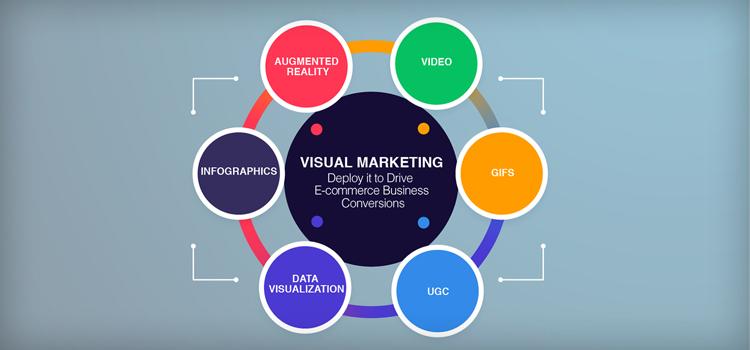
Harnessing the Power of Visuals in Ecommerce Design
In the dynamic world of ecommerce, visuals are not just supplementary; they are central to the user experience and conversion rates. A well-designed online store harnesses high-quality images, videos, and graphics that resonate with the brand’s identity, creating a captivating shopping atmosphere.
When designing an ecommerce website, it’s essential to prioritize visual storytelling. This involves using images and videos to convey the brand narrative, showcase products, and create emotional connections with potential customers. Consider the following strategies:
- High-Resolution Product Images: Ensure that all product images are high-quality and offer multiple angles. Customers are more likely to make a purchase when they can see a detailed view of the product.
- Consistent Visual Themes: Maintain a cohesive color palette and typography throughout the site. This consistency not only strengthens brand identity but also enhances the overall aesthetic appeal.
- Infographics and Icons: Use infographics to explain complex information in an easily digestible format. Icons can also simplify navigation and help communicate key features quickly.
Beyond static images, incorporating videos can significantly boost engagement. Product demonstrations, tutorials, or customer testimonials in video format provide a richer understanding of what’s being sold. It’s an effective way to build trust and credibility with your audience.
Another crucial aspect is the use of white space. Effective use of white space can draw attention to specific products and create a cleaner, more organized look. This design element reduces visual clutter and allows customers to focus on what matters most—the products!
Here’s a simple table to highlight the impact of various visual elements on customer behavior:
| Visual Element | Impact on Conversion |
|---|---|
| High-Quality Images | Boosts purchase confidence |
| Videos | Increases engagement |
| Infographics | Simplifies decision-making |
| Consistent Branding | Enhances brand recognition |
| White Space | Improves readability |
Lastly, don’t underestimate the power of user-generated content. Featuring customer photos and reviews not only adds authenticity but also encourages potential buyers to visualize themselves using your products. Integrating a social media feed can also keep the content fresh and engaging.
by thoughtfully incorporating visuals into your ecommerce design, you can create an online store that captivates visitors, enhances user experience, and ultimately drives sales. The right visual strategy makes your products irresistible and your brand unforgettable.
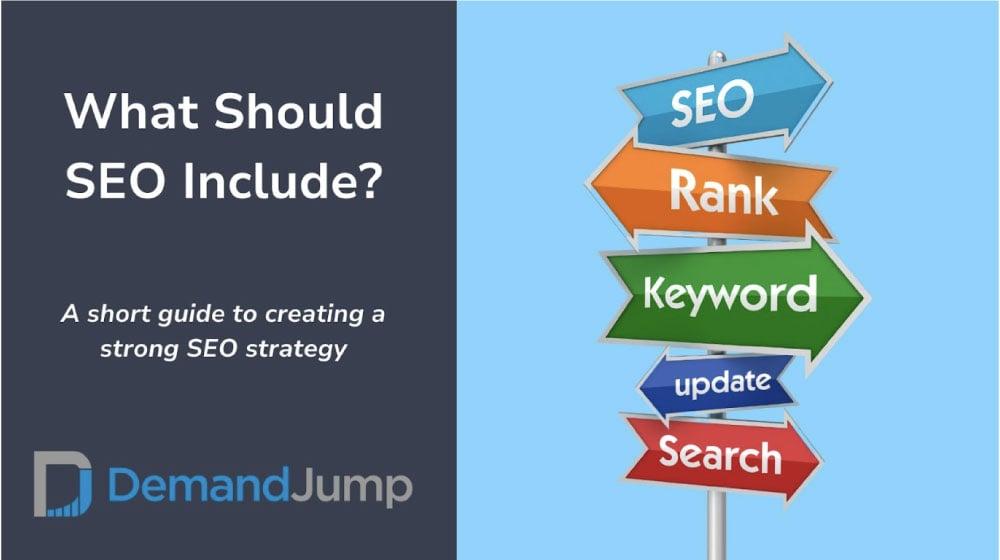
Integrating Effective SEO Strategies into Your Ecommerce Site
is crucial for enhancing visibility, driving traffic, and ultimately boosting sales. To start, it’s essential to focus on keyword research. Identify relevant keywords that your potential customers are likely to use when searching for products. Tools like Google Keyword Planner and SEMrush can help you find high-traffic, low-competition keywords that are ideal for your niche.
Once you’ve settled on your keywords, be sure to incorporate them seamlessly into various elements of your site:
- Product Titles: Use clear, descriptive titles that include primary keywords.
- Meta Descriptions: Craft unique meta descriptions for each product, encouraging clicks while including relevant keywords.
- Image Alt Text: Don’t forget to optimize images by using descriptive alt text with keywords to improve accessibility and SEO.
Content is king in the realm of SEO. Create engaging product descriptions that not only inform but also resonate with your target audience. Aim for unique content for each product instead of generic descriptions, which can hurt your search rankings. Enhance your content strategy by producing blog posts related to your products or industry; this can help establish your site as an authority and improve your organic traffic.
Another vital aspect of SEO is ensuring your website is mobile-friendly. With a significant amount of online shopping happening on mobile devices, Google emphasizes mobile usability in its ranking factors. Use responsive design techniques to ensure that your site looks and functions well on all devices, enhancing user experience.
Speed is paramount—ensure your site loads quickly. A slow-loading site can lead to high bounce rates, negatively impacting your rankings. Utilize tools like Google PageSpeed Insights to analyze your site’s speed and make necessary optimizations, such as compressing images and minimizing HTTP requests.
Let’s not overlook the importance of backlinks. Quality backlinks from reputable sites can significantly improve your SEO standing. Engage in outreach efforts by collaborating with influencers, participating in guest blogging, and leveraging social media to broaden your reach and earn those valuable backlinks.
To help visualize your SEO strategy, here’s a simple table to track your progress:
| SEO Strategy | Implementation Status | Next Steps |
|---|---|---|
| Keyword Research | Completed | Implement on product pages |
| Content Creation | In Progress | Publish blog content weekly |
| Mobile Optimization | Pending | Test responsiveness |
| Site Speed Optimization | Completed | Monitor loading times |
| Backlink Outreach | In Progress | Contact potential partners |
regularly analyze your site’s performance using tools like Google Analytics. Monitor key metrics such as traffic sources, conversion rates, and user behavior to understand what’s working and what needs improvement. This ongoing analysis will help you refine your SEO strategies, ensuring that your ecommerce site remains competitive in the ever-evolving online marketplace.
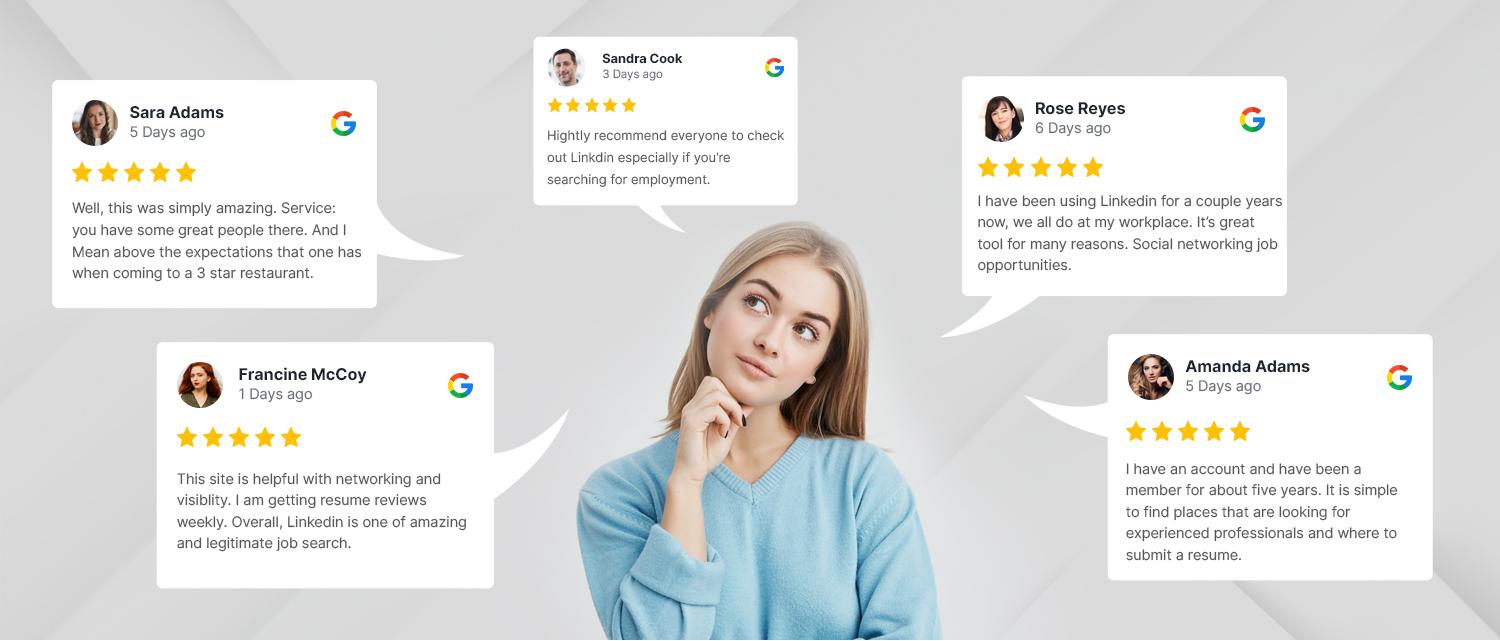
Building Trust with Customer Reviews and Testimonials
In today’s competitive ecommerce landscape, building trust is essential for converting visitors into loyal customers. One of the most effective ways to achieve this is through genuine customer reviews and testimonials. When prospective buyers see positive feedback from others, it creates a sense of reliability and authenticity that can significantly influence their purchasing decisions.
Consider the following benefits of incorporating customer reviews into your ecommerce website:
- Social Proof: Highlighting authentic customer stories provides social proof. It reassures potential buyers that others have had positive experiences with your products, making them more likely to trust your brand.
- Improved SEO: Unique and relevant customer reviews can enhance your website’s SEO. Search engines often favor content that is fresh and user-generated, helping your site rank higher.
- Engagement: Engaging with customer reviews—whether they are positive or negative—shows that your brand values feedback. This interaction can foster a sense of community and loyalty among your customers.
- Informed Decision-Making: Detailed testimonials can provide specific insights into product quality, usability, and value. This information helps potential buyers make informed choices.
To effectively showcase customer reviews on your ecommerce site, consider these strategies:
- Use Visuals: Pair written testimonials with images or videos. Visual content can amplify the impact of a review, making it more relatable and trustworthy.
- Incorporate Ratings: Display star ratings alongside reviews. This quick visual representation allows customers to gauge product satisfaction at a glance.
- Highlight Key Reviews: Feature standout testimonials prominently on your homepage or product pages. Choose reviews that address common concerns or showcase unique product benefits.
- Encourage User-Generated Content: Prompt customers to share their experiences on social media. This not only provides testimonials but also promotes your brand organically.
To illustrate the impact of customer reviews, consider this simple comparison:
| Without Reviews | With Reviews |
|---|---|
| High bounce rate | Lower bounce rate |
| Less customer engagement | Higher customer engagement |
| Lower conversion rates | Higher conversion rates |
| Doubtful first-time buyers | Confident first-time buyers |
Ultimately, when you prioritize customer reviews and testimonials, you’re not just showcasing your products; you’re telling a story about your brand. A brand that listens, evolves, and values its customers’ opinions. As you embark on your ecommerce journey in Utah, remember that trust is a key ingredient in establishing a successful online store. Invest time in collecting and displaying customer feedback, and watch your business flourish.
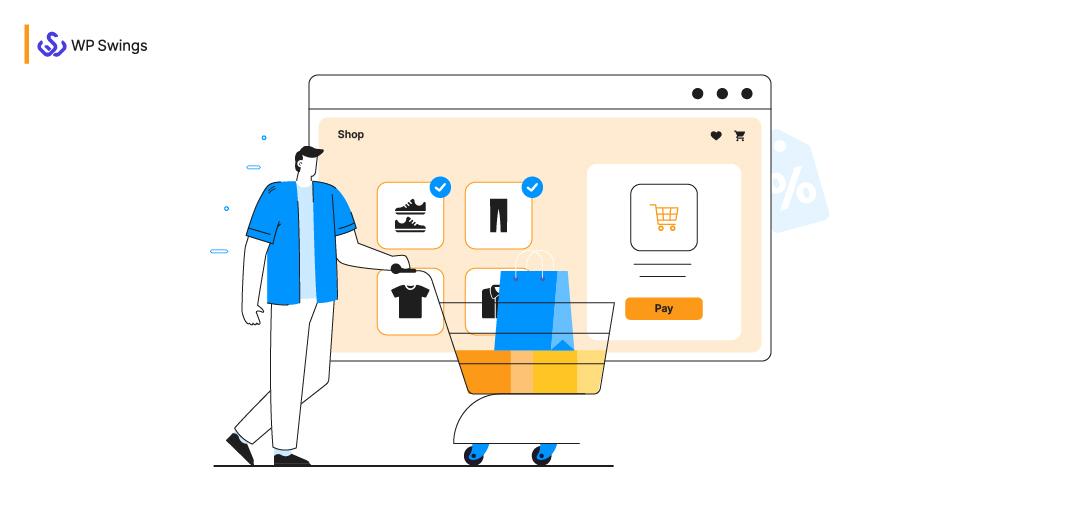
Streamlining Checkout Processes for Increased Sales
In the competitive world of ecommerce, the checkout process is often the make-or-break factor that determines whether a customer completes their purchase or abandons their cart. Streamlining this process is essential for maximizing sales and enhancing the overall customer experience. Here are some key strategies to consider:
- Simplify the Checkout Form: Ask for only essential information. Long forms can frustrate customers and lead to cart abandonment. Stick to the basics: name, shipping address, and payment details.
- Enable Guest Checkout: Allow customers to make purchases without creating an account. This reduces friction and speeds up the buying process.
- Offer Multiple Payment Options: Different customers prefer different payment methods. Integrate various options such as credit cards, PayPal, and mobile wallets to cater to diverse preferences.
- Implement Autofill Features: Use autofill for address and payment fields. This small enhancement can significantly speed up the process and make it more user-friendly.
- Provide Clear Progress Indicators: Use visual cues to show customers how far along they are in the checkout process. This helps manage expectations and reduces anxiety.
Integrating these elements can transform your checkout experience from a potential roadblock into a seamless journey. Moreover, it’s vital to ensure that your website is optimized for mobile devices. With a growing number of shoppers using smartphones, a mobile-friendly checkout is no longer optional.
Consider A/B testing different checkout layouts and processes to determine what resonates best with your audience. Collect data on conversion rates and customer feedback to make informed decisions about your ecommerce design. By continuously optimizing, you can build a more effective checkout process.
Additionally, the importance of security cannot be overstated. Customers need assurance that their personal and financial information is safe. Display security badges and provide clear information about your site’s security measures. Trust is a critical component in the online shopping experience.
| Checkout Feature | Impact on Sales | Implementation Difficulty |
|---|---|---|
| Simplified Forms | High | Low |
| Guest Checkout | Medium | Medium |
| Multiple Payment Options | High | Medium |
| Autofill Features | Medium | Low |
| Security Measures | High | High |
By prioritizing these features, you can create a checkout process that not only reduces cart abandonment but also encourages repeat business. A smooth and efficient checkout experience is not just a convenience; it’s a necessity for any high-performing online store.
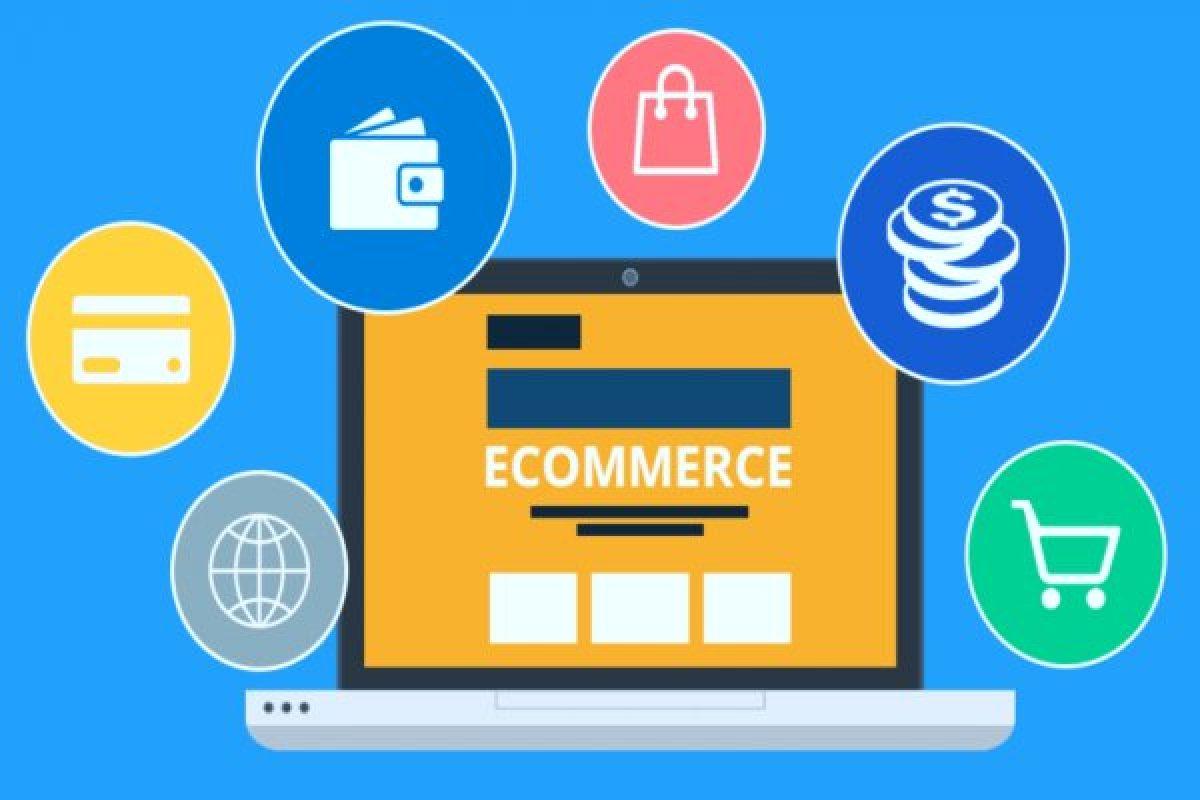
Choosing the Right Ecommerce Platform for Your Needs
Choosing the right ecommerce platform is crucial for the success of your online store. With a myriad of options available, each offering different features and capabilities, it’s essential to align your choice with your specific business needs and goals. Here are some key factors to consider:
- Business Model: Consider whether you’re selling physical products, digital goods, or services. Different platforms cater to different business models. For instance, Shopify excels in physical product sales, while WooCommerce is ideal for those wanting flexibility in digital products.
- Customization: Look for a platform that allows you to tailor your online store to match your brand’s identity. Some platforms like Magento offer extensive customization options, but they may require technical know-how, while others like Squarespace provide attractive templates that are easy to customize.
- Scalability: As your business grows, so will your needs. Choose a platform that can scale alongside your business, accommodating increasing traffic and additional product lines without compromising performance.
- User-Friendliness: A user-friendly interface is essential, especially if you don’t have a background in web design. Platforms like Wix offer drag-and-drop features that simplify the process of building your store.
- Payment Options: Ensure the platform supports a variety of payment methods to offer your customers flexibility. Some platforms have more extensive built-in payment options than others, affecting your conversion rates.
- SEO Capabilities: An ecommerce platform with strong SEO features can help your site rank higher in search results, driving organic traffic to your store. Look for built-in SEO tools and customizable URLs.
To help you visualize your options, here’s a quick comparison of some popular ecommerce platforms:
| Platform | User-Friendly | Customization | Payment Options | Best For |
|---|---|---|---|---|
| Shopify | Yes | Moderate | Multiple | Retailers |
| WooCommerce | Moderate | Extensive | Multiple | Flexibility |
| Wix | Yes | Limited | Multiple | Small Businesses |
| Magento | No | Extensive | Multiple | Large Enterprises |
| Squarespace | Yes | Moderate | Limited | Creative Brands |
Ultimately, the right ecommerce platform for you will depend on your unique needs, budget, and technical capability. Take the time to evaluate your options, and don’t hesitate to reach out to providers for demos or trials. Remember, the right decision now can pave the way for a thriving online presence in the future.
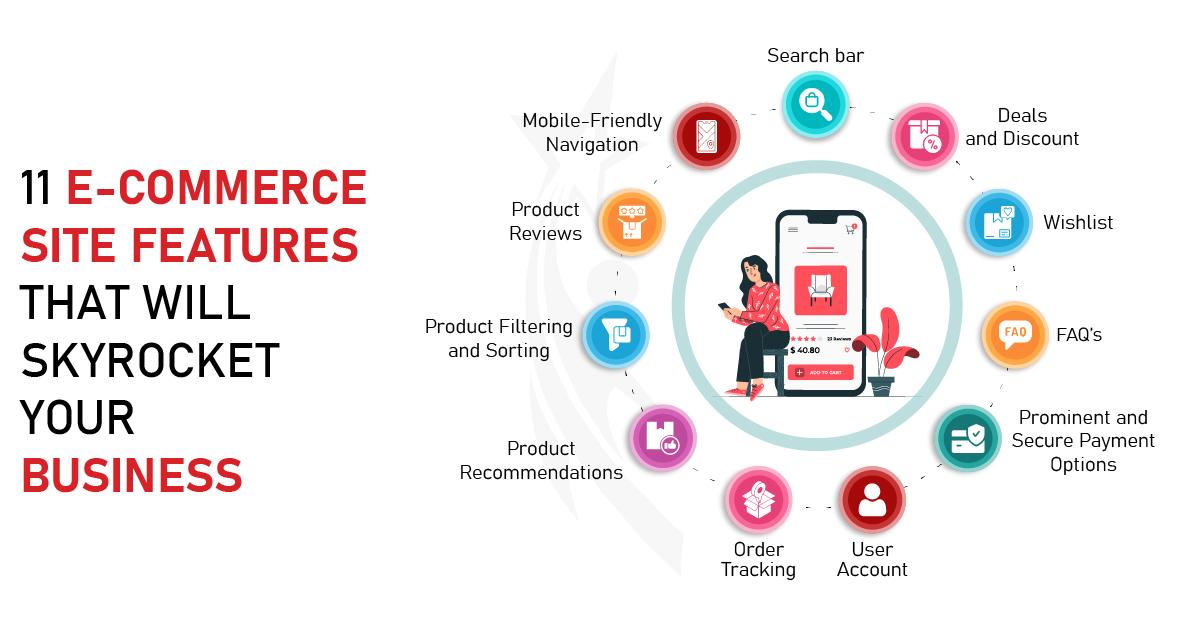
Top Features Every Successful Ecommerce Site Should Have
In the competitive landscape of online retail, having a well-designed ecommerce site is paramount for success. Here are some essential features that can help set your online store apart from the rest.
- User-Friendly Navigation: A site that is easy to navigate keeps customers engaged. Ensure that categories are clearly labeled and products are easy to find. Implement a search bar that suggests products as users type.
- Responsive Design: With the increasing use of mobile devices for shopping, a responsive design is crucial. Your website must look and function flawlessly on smartphones, tablets, and desktops alike.
- High-Quality Images and Videos: Visual content plays a vital role in online shopping. Use high-resolution images and product videos to showcase your offerings. Consider including a zoom feature to allow customers to see details up close.
- Secure Payment Options: Building trust is essential. Offer various payment methods, including credit cards, PayPal, and newer options like Apple Pay or Google Pay. Ensure that the checkout process is secure and straightforward.
- Customer Reviews and Ratings: Social proof can greatly influence purchase decisions. Feature customer reviews prominently on product pages and encourage buyers to leave feedback after their purchases.
- Fast Loading Times: Performance matters. A slow-loading site can lead to high bounce rates. Optimize images and leverage browser caching to ensure your site loads quickly to keep customers engaged.
- Personalized Shopping Experience: Tailored experiences can enhance customer satisfaction. Use browsing history and purchase data to recommend products that might interest individual shoppers.
To illustrate the impact of these features, consider the following table that compares ecommerce sites with and without these essential elements:
| Feature | Site Without Feature | Site With Feature |
|---|---|---|
| User-Friendly Navigation | High bounce rate | Increased time spent on site |
| Responsive Design | Poor mobile experience | Higher mobile conversion rates |
| Secure Payment Options | Abandoned carts | Boosted customer trust |
| Fast Loading Times | Slow user experience | Improved user satisfaction |
Incorporating these features into your ecommerce site can significantly enhance user experience and drive sales. Evaluate your current site and prioritize these elements to pave the way for success in the online marketplace.
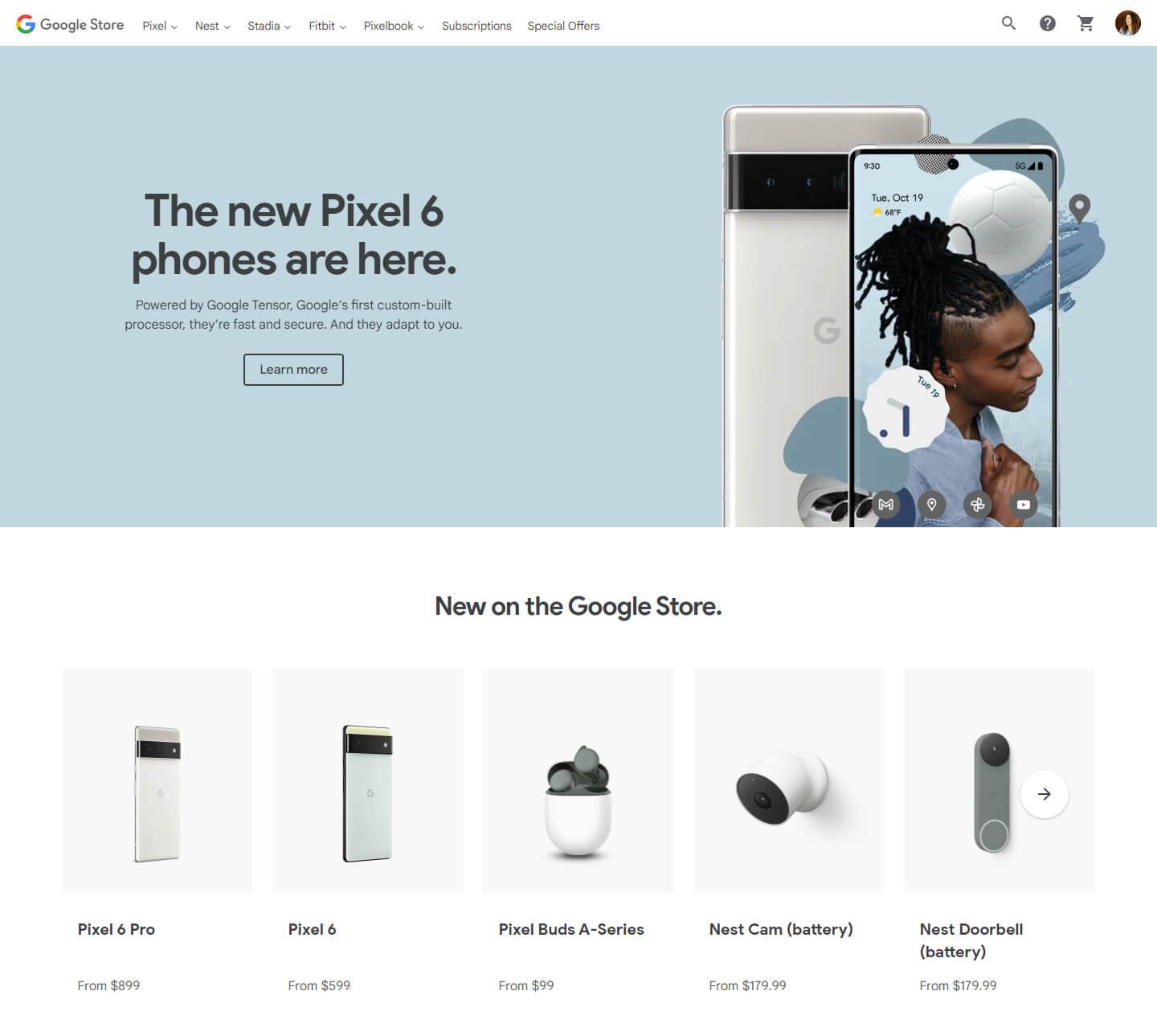
Exploring Utahs Best Ecommerce Web Design Providers
Exploring Utah’s Best Ecommerce Web Design Providers
Utah’s digital landscape is thriving, thanks in part to a vibrant community of ecommerce web design providers. Whether you’re a startup looking to make a splash or an established business seeking a fresh online presence, the right design team can transform your vision into reality. With a focus on user experience and conversion optimization, these providers understand what it takes to create a high-performing online store.
When selecting an ecommerce web design provider, consider the following key factors:
- Portfolio and Experience: Examine their previous work to assess their style and expertise.
- Customization Options: Ensure they offer tailored solutions that align with your brand identity.
- SEO Knowledge: A great design is only effective if potential customers can find you.
- Ongoing Support: Look for providers that offer maintenance and updates after the launch.
Here’s a glance at some of Utah’s top ecommerce web design providers, known for delivering exceptional results and customer satisfaction:
| Provider Name | Specialties | Notable Clients |
|---|---|---|
| DesignCow | Custom Designs, SEO | ABC Store, XYZ Boutique |
| Bluebird Creative | Responsive Design, Branding | 123 Gadgets, Local Artisans |
| WebGenius | Marketing Integration, E-commerce Solutions | Fashion Hub, Tech Supplies |
| Pixel Perfect | User Experience, Mobile Optimization | Fitness World, Green Living |
Each of these providers brings unique strengths to the table. For instance, DesignCow excels in crafting custom designs that resonate with users, while Bluebird Creative focuses on creating visually stunning responsive layouts. Meanwhile, WebGenius integrates marketing strategies seamlessly with ecommerce functionalities, ensuring your online store not only looks great but also drives sales.
When it comes to budget considerations, it’s crucial to find a balance between cost and quality. Most reputable design firms in Utah offer a range of packages, so you can choose one that fits your financial plan without compromising on essential features. Remember, investing in a well-designed ecommerce website can significantly impact your business’s bottom line.
Whether you’re in Salt Lake City, Provo, or any other part of the Beehive State, these providers are ready to help you elevate your online presence. By collaborating with the right team, you can ensure your ecommerce site not only meets industry standards but also exceeds customer expectations. So why wait? Dive into your ecommerce journey today!
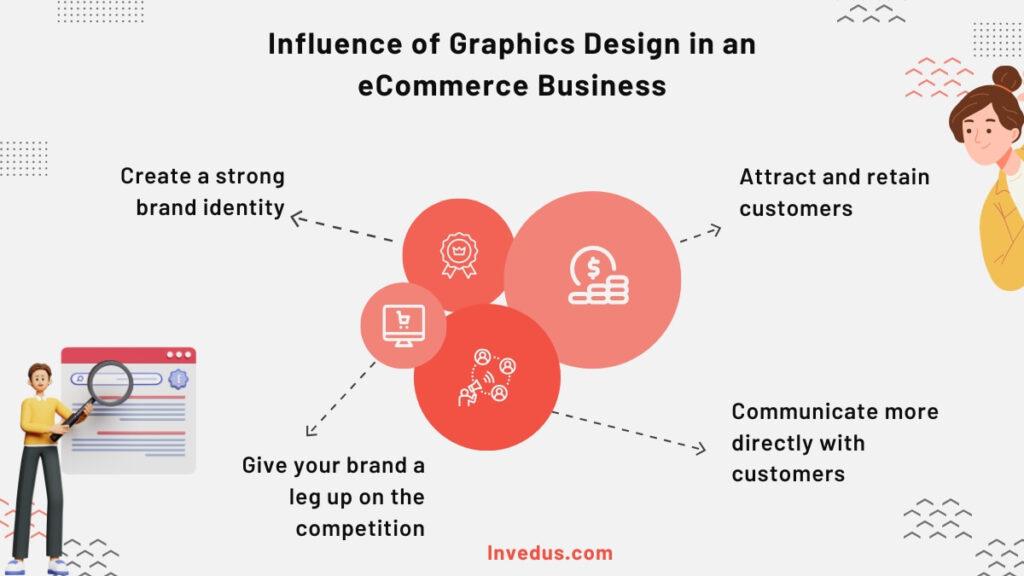
What to Look for When Hiring an Ecommerce Designer
Choosing the right ecommerce designer is crucial for building a successful online store. With the plethora of options available, knowing what to prioritize can make all the difference. Here are some key factors to consider when selecting a designer who can elevate your ecommerce platform.
- Portfolio Diversity: Examine their previous work. A strong designer should have a varied portfolio showcasing different styles and types of ecommerce sites. Look for examples that resonate with your vision and industry.
- User Experience (UX) Focus: A great ecommerce site not only looks good but also provides a seamless shopping experience. Ensure the designer pays attention to navigation, loading speed, and mobile optimization.
- Understanding of Ecommerce Platforms: Check if the designer is proficient in popular ecommerce platforms like Shopify, WooCommerce, or Magento. Their expertise in these tools will ensure they can recommend the best solutions for your needs.
- SEO Knowledge: An ecommerce designer should understand the basics of search engine optimization. This knowledge will help create a site that ranks well and drives organic traffic.
- Customization Capabilities: Your online store should reflect your brand’s unique identity. Look for designers who are not only skilled in using templates but also capable of creating custom designs tailored to your brand.
- Communication Skills: Effective communication is vital throughout the design process. Ensure the designer is accessible, responsive, and willing to engage in discussions about your ideas and feedback.
- Post-Launch Support: The relationship with your designer shouldn’t end once the site goes live. Inquire about their post-launch services, including maintenance, updates, and troubleshooting.
When interviewing potential designers, consider asking about their design process and how they approach projects. A structured approach often leads to better results and fewer miscommunications.
don’t forget to discuss budget upfront. Having a clear understanding of costs from the beginning can help you find a designer who meets your financial expectations without compromising on quality.
| Key Factors | Importance |
|---|---|
| Portfolio Diversity | High |
| User Experience | Critical |
| SEO Knowledge | High |
| Post-Launch Support | Medium |
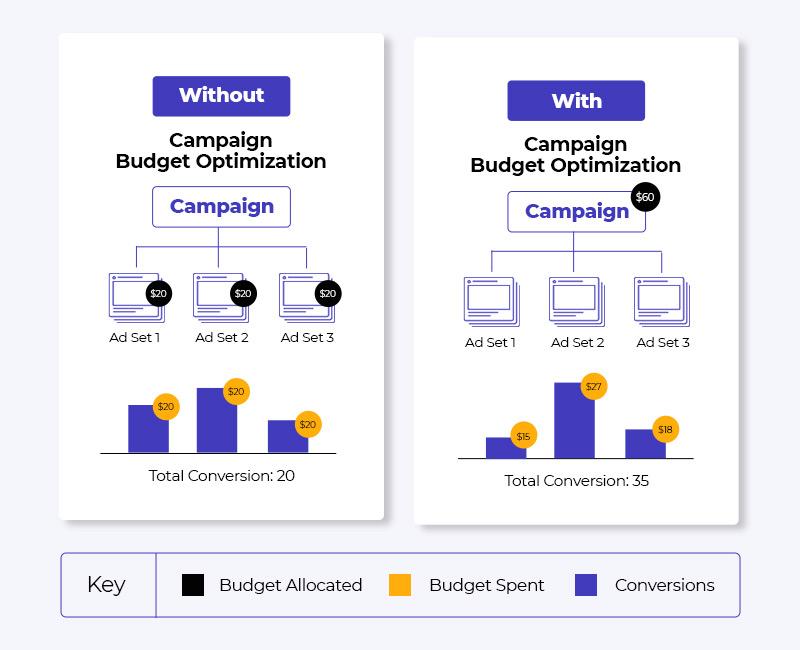
Maximizing Your Budget: Getting the Most from Your Investment
When embarking on the journey to create a high-performing eCommerce website, understanding how to maximize your budget is crucial for long-term success. Investing wisely can lead to enhanced functionality, better user experience, and increased sales. Here are some strategies to help you stretch every dollar while getting the most from your eCommerce investment:
- Prioritize Essential Features: Start by identifying the must-have features that will directly contribute to your business goals. Focus on functionalities like secure payment gateways, mobile optimization, and user-friendly navigation. Avoid unnecessary bells and whistles that don’t serve a purpose.
- Choose the Right Platform: Selecting a cost-effective eCommerce platform is paramount. Platforms like WooCommerce, Shopify, or Magento offer various pricing tiers. Evaluate your needs against their features and pick one that provides the best value for your specific requirements.
- Utilize Templates Wisely: Many web design providers offer customizable templates that can save you money. Opt for a template that aligns with your brand identity and allows for easy adjustments. This approach ensures you don’t start from scratch while still maintaining a unique look.
A crucial aspect of maximizing your budget lies in leveraging the skills of professionals. Although it may seem tempting to cut costs by doing everything yourself, investing in expert help can yield better results:
- Hire Local Talent: Working with local eCommerce web design providers in Utah can lead to more tailored solutions. They understand regional nuances and can provide insights that a distant team might overlook. This localized knowledge can enhance your website’s effectiveness, ultimately boosting your ROI.
- Focus on SEO: An optimized website will attract organic traffic without relying solely on paid ads. Make sure your web design process includes SEO best practices, such as proper coding, site speed optimization, and mobile-friendliness. Investing in SEO will pay off significantly in the long run.
Another tip is to continuously evaluate your design and functionality:
| Evaluation Aspect | Action Steps |
|---|---|
| User Experience | Conduct regular user testing and gather feedback to refine your design. |
| Performance Metrics | Utilize analytics tools to track sales, traffic, and user behavior for actionable insights. |
| Cost Analysis | Regularly review your expenditures vs. sales to identify areas for improvement. |
Lastly, don’t forget to stay updated with the latest trends in eCommerce web design. The online retail landscape is constantly evolving, and keeping abreast of new technologies and design standards can give you a competitive edge. Subscribe to industry newsletters, attend webinars, and join online communities to foster your knowledge.
By following these strategies, you can maximize your budget effectively and see a higher return on your investment. Remember, the goal is to create a website that not only looks great but also converts visitors into loyal customers.
Frequently Asked Questions (FAQ)
Q&A: Ecommerce Web Design in Utah: Create a High-Performing Online Store (+ 5 Best Providers)
Q: Why is ecommerce web design so important for businesses in Utah?
A: Great question! Ecommerce web design is crucial because it impacts first impressions and user experience. A well-designed online store can enhance credibility, boost user engagement, and ultimately drive sales. In Utah, where many consumers prefer shopping online, having an appealing and functional ecommerce site is key to standing out from the competition!
Q: What should I consider when designing my ecommerce site?
A: There are several factors to keep in mind! Start with a user-friendly layout that guides visitors effortlessly through your products. Focus on mobile responsiveness—most shoppers use their phones! Additionally, prioritize fast loading times and secure payment options. Don’t forget about high-quality visuals and clear calls to action; they can significantly affect conversion rates.
Q: How can I ensure my ecommerce site is high-performing?
A: To ensure high performance, optimize your website for speed with compressed images and efficient coding. Implement SEO best practices to improve visibility on search engines. Regularly monitor analytics to understand customer behavior and adapt accordingly. A/B testing different elements can also help you find what resonates best with your audience.
Q: What’s the difference between hiring a local provider versus a national one for ecommerce web design?
A: Hiring a local provider in Utah can give you unique advantages! They understand the local market trends, customer preferences, and cultural nuances that can influence your ecommerce strategy. Additionally, working with a local team often allows for better communication and collaboration, which can lead to a more tailored and effective online store.
Q: Can you recommend some of the best ecommerce web design providers in Utah?
A: Absolutely! Here are five highly-rated providers you should consider:
- Red Olive – They specialize in creating custom websites that drive sales and engagement, perfect for ecommerce.
- Maven Media – Known for their creative designs and strategic marketing approaches, they can help elevate your online presence.
- Hatch Design – They offer comprehensive services from branding to web design, ensuring your online store reflects your unique identity.
- 3 Media Web – With a focus on functionality and aesthetics, they create ecommerce sites that are not only beautiful but also convert visitors into customers.
- Clever Solutions – They provide a full range of ecommerce services, including design, development, and digital marketing, to help grow your business effectively.
Q: What is the next step if I want to start my ecommerce site?
A: The first step is to outline your goals and assess your target audience. Once you have a clear vision, reach out to one of the providers mentioned to discuss your ideas and get a proposal. Remember, investing in a professional ecommerce web design is one of the best decisions you can make for your business’s growth and success!
Q: Any final tips for a successful ecommerce launch?
A: Definitely! Before you launch, make sure to test everything thoroughly—from browsing to checkout. Gather feedback from a small group to iron out any kinks. Once you’re ready, create a buzz with a solid marketing plan that includes social media, email campaigns, and maybe even some promotions to attract initial customers. Good luck with your ecommerce journey in Utah!
Insights and Conclusions
As we wrap up our journey through the world of ecommerce web design in Utah, it’s clear that establishing a high-performing online store is not just a perk—it’s a necessity in today’s digital marketplace. With the right design, your online store can captivate visitors, convert browsers into buyers, and foster lasting customer relationships.
Remember, the providers we’ve highlighted are among the best in the business, equipped with the tools and expertise to help you carve out your niche. Whether you’re starting fresh or looking to revamp your existing site, don’t hesitate to reach out to these talented teams. They can help turn your vision into a reality, ensuring your ecommerce platform not only meets the demands of your customers but also stands out in a crowded market.
So, what are you waiting for? Dive into the world of ecommerce with confidence, and set your store up for success. If you have questions, need guidance, or just want to talk about your ideas, feel free to reach out. Your dream online store is just one click away—let’s make it happen!



